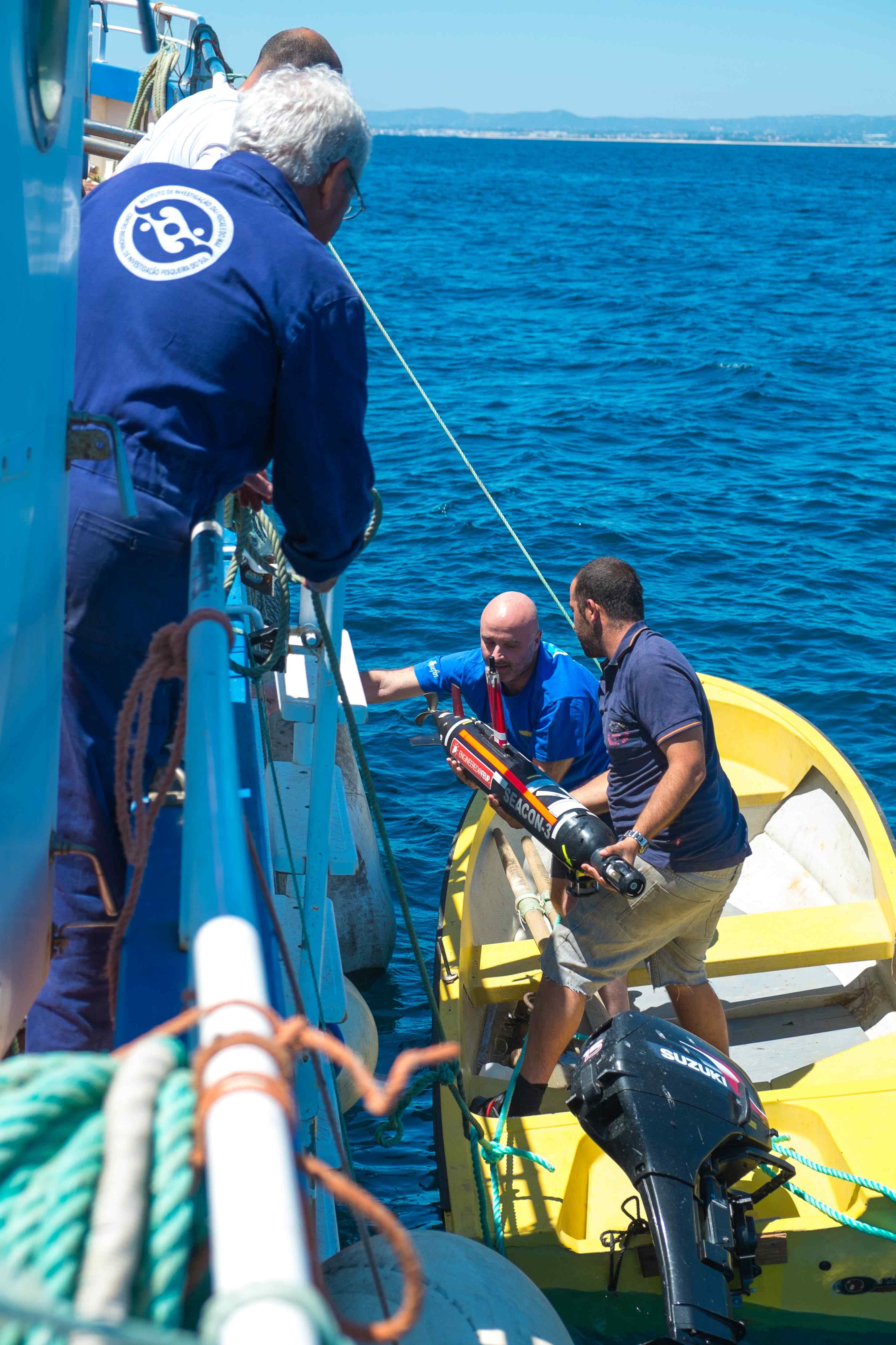Seacon AUV tests @sea and intense UAV ops @farm house
Thursday 8th saw more testing, as before at sea and at the farm house. At sea, the backup Seacon AUV was launched, tested with T-REX and recovered with a complex procedure involving a small spare boat with people in the water. Not ideal, but necessary given the Seacon, an older and less robust vehicle, is sensitive to being launched from the deck (see May 7th entry). The Xplore was also tested with large 1 km X 1 km surveys around the Diplodus. Altogether things went very well for the crew out on the ship with minor excitement when the spare boat was being towed by the Diplodus instead of being hauled onboard.
On the farm, things were intense given the feeling that the UAV team still had a lot to accomplish to get to the start of the experiment Monday. Work started with an earlier run in the morning, around 9.15am and by noon the group had accumulated 4 flights essentially validating bug fixes for the DUNE low-level controller sitting on top of the ARDUPilot autopilot of the X8.
T-REX was also used for loitering the UAV, something we had already demonstrated in our REP-13 exercises last July. But it was good to see the deliberate controller on a laptop on the ground controlling a UAV in the air (to the best of our knowledge this is the only such deliberate Planning/Execution system for a UAV anywhere; that the same system controls an AUV is novel and unique). Flight tests continued through the afternoon heat into late evening, finally wrapping up at 7.30pm. Our lone Pilot who has full control of the UAV on launch and recovery, was undoubtedly exhausted.
One very happy news was the clearance of the WaveGlider electronics box from Portuguese customs near Porto. This was a major accomplishment (no kidding) and we have Paulo Lopes (now better known as 'Paulo the Magnificent'), FEUP administrative support, to thank for his persistence. The box was shipped by bus to arrive the next morning in Faro for pick up. With this box, we intend to assemble it into the WG and get ready to (finally) deploy the vehicle complementing our triad of aerial, surface and underwater vehicles in operation. Of course the real challenge to come, next week, is to make them work together. But thats what this experiment is all about!
We returned to a quiet meal at the local restaurant down the road where we also had the debrief there, since the AUV team arrived late from sea that day. We were finally joined by our resident biologist Nuno Queiroz from CIBIO,











